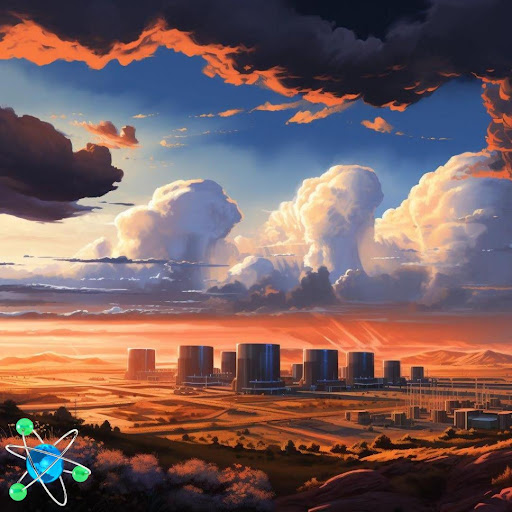
- Pueblo’s Economic Challenge: Closure of the Comanche 3 coal unit in 2031 poses a significant economic threat to Pueblo, potentially costing over USD 845 million in taxes, emphasizing the urgent need for a well-planned transition.
- PIESAC Committee Recommendations: After a thorough evaluation, the PIESAC committee recommends either a new gas plant with carbon capture or advanced nuclear as viable options for replacing the coal units, with advanced nuclear emerging as the preferred choice for job creation and sustained tax contributions.
- Xcel Energy’s Clean Energy Goals: Xcel Energy-Colorado’s commitment to 100% carbon-free energy by 2050 drives the transition, with a focus on achieving 81% carbon-free generation by 2030, marking a significant shift from the current mix of coal, natural gas, and wind in their energy portfolio.
PIESAC, a diverse 11-member committee comprised of Pueblo community leaders, has been convened by Xcel Energy-Colorado to meticulously assess and propose future strategies for clean energy generation. The primary focus is to replace the last remaining coal-fired unit at the Comanche Generation Station, situated 110 miles south of Denver. This initiative aligns with Xcel Energy’s overarching goal to transition to delivering 100% carbon-free energy to its Colorado customers and communities by the year 2050.
The Comanche Generation Station currently operates three coal units, with Unit 1 having retired in 2022, Unit 2 set for retirement by the conclusion of 2025, and Unit 3 earmarked for closure no later than January 1, 2031. This impending closure, originally anticipated to extend until 2070, poses substantial economic challenges for the Pueblo community. The adverse effects are estimated to cost Pueblo upwards of USD 845 million in taxes, which contribute significantly to funding schools, fire districts, libraries, conservation districts, as well as the operational aspects of both the city and the county.
The urgency to mitigate climate-changing emissions is acknowledged, but the study underscores the equal importance of devising a strategic plan for coal-dependent communities like Pueblo. These communities, historically reliant on well-paying skilled jobs and substantial tax contributions from coal plants, necessitate a forward-looking approach.
The recently released report by PIESAC marks the culmination of an exhaustive ten-month effort to scrutinize clean energy generation alternatives that can seamlessly replace the existing coal units at the Comanche Generation Station. The overarching goal is to ensure a “just transition,” where coal communities not only avoid a decline in their economic status due to coal facility closures but also witness a substitution of coal generation with high-paying, skilled jobs and a replacement of lost tax revenue. This, in turn, presents these communities with an opportunity to thrive, expand, and reimagine their local economies.
In their evaluation of potential generation possibilities for Pueblo by 2034, the committee considered a myriad of options, including various energy storage and battery technologies, hydrogen as a primary fuel, additional solar facilities, combined cycle gas with carbon capture, and advanced nuclear. However, the report emphatically recommends that only two options, a new gas plant with carbon capture or advanced nuclear, should be seriously considered for implementation in Pueblo.
Comparatively, a new gas plant with carbon capture is anticipated to provide 20 to 25 jobs with a salary range of USD 80,000-120,000, contributing approximately USD 16.5 million in annual tax payments. On the other hand, the advanced nuclear option emerges as the more favorable choice, promising 200 to 300 jobs with a salary range of USD 60,000-200,000 and a substantial annual tax contribution of USD 95.29 million. The report contends that, among the technologies scrutinized, only advanced nuclear generation has the potential to not only maintain Pueblo’s economic stability but also pave the way for prosperity.
In 2022, coal constituted 27% of Xcel Energy-Colorado’s generation mix, with natural gas supplying around 31% and wind contributing 36%. Xcel Energy aims to achieve 81% carbon-free generation by 2030 and an ambitious target of 100% carbon-free energy by 2050.
Xcel Energy-Colorado, a part of the larger Xcel Energy headquartered in Minneapolis, serves eight Western and Midwestern U.S. states. Its generating portfolio includes nuclear power plants such as Monticello and Prairie Island in Minnesota, showcasing a commitment to a diversified and cleaner energy future.

